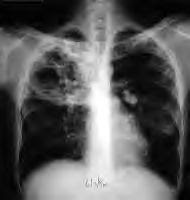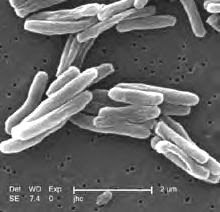After a decade of the introduction of DOTS (Directly Observed Treatment Short-Course) the graph for TB notification rate has started to look downward. The rate which was 112 per 100,000 population in 1999/00 had risen to 123 in 2004/05 has come down to 119 in 2005/06.It takes two decades or more to see the result of the treatment of TB and the country already achieved the global targets, said director at the National Tuberculosis Centre Dr. Pushpa Malla.Nepal has achieved the global targets in TB control ? with the detection rate of 70 per cent and the treatment success rate of 88 per cent, Dr. Malla told The Rising Nepal. She said that after DOTS was started in the country the number of deaths has reduced to around 7,000 from 10,000 annually.Forty-five per cent of the total population is infected with Tuberculosis (TB) and mostly those who die are of economically active age group. According to the National TB control Programme, 40,000 people get TB every year of them half of them are new cases identified through sputum tests.Dr. Malla said that DOTS services were being provided from 4,000 places, including public health institution and sub-health posts. She said that 60 per cent of all health institutions have been providing DOTS and the government aims at expanding the services to all public health institutions from the current fiscal year.The government has also been providing DOTS Plus for multi-drug resistance patients, in which the patients should take medicines regularly for two years. The DOTS Plus scheme was started two years ago. Of those who are under the DOTS Plus course, 70 per cent of them have been found to be negative after six months of taking the medicine. More than 20 patients have already completed the two-year course and they are hail and hearty now.The DOTS Plus is being provided from five centres, one each in the five development regions and more than 20 sub-centres. The government is planning to expand the service to Dhangadi, Chitwan and Tanahu from this fiscal year and to reach to several districts of the mid-western region in the near future.The National TB control Programme was started in 1996 aiming to reduce mortality, morbidity and transmission of tuberculosis so that it does not pose a public health problem, Dr. Malla said. The Nepal Stop TB Strategy was adopted in 2006 to address TB among people living with HIV/AIDS and MDR-TB.Dr. Malla said that people those living with HIV/AIDS are highly prone to TB and they could develop complications at any time but that could be prevented like other TB patients if they take regular DOTS."There are challenges for long-term sustainability of the DOTS scheme as we depend on the donors for 70 per cent of the funding," she said. Even now, TB patients especially those with HIV and MDR require more nutrition and social support, which we have not been able to provide. Again, many patients have to come to the centres regularly for DOTS from their villages walking several days and that could be one of the reasons for the irregularity of the intake of medicines. This problem is being tackled by utilizing female health volunteers, who reach medicines to the patients at their doorsteps, Dr. Malla said.
http://www.gorkhapatra.org.np/content.php?nid=28261
WHAT'S NEW IN TUBERCULOSIS
Tuesday, 16 October 2007
Subscribe to:
Post Comments (Atom)





No comments:
Post a Comment